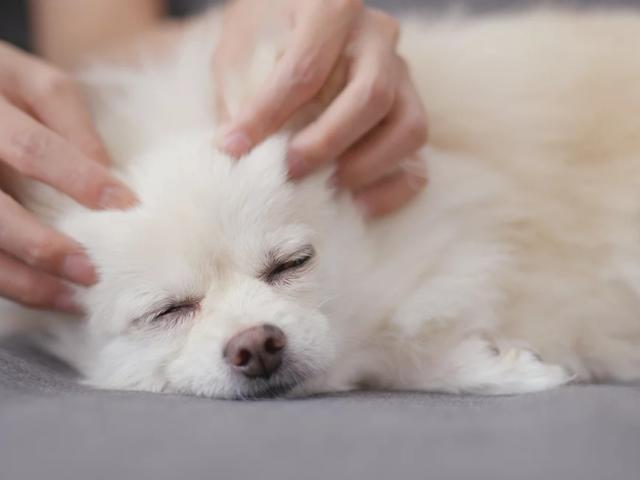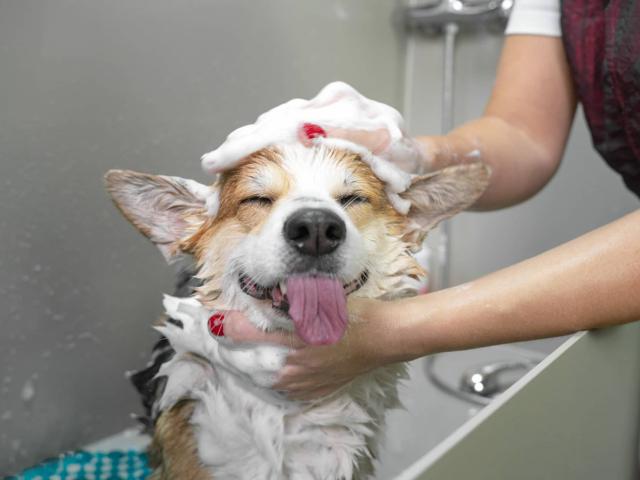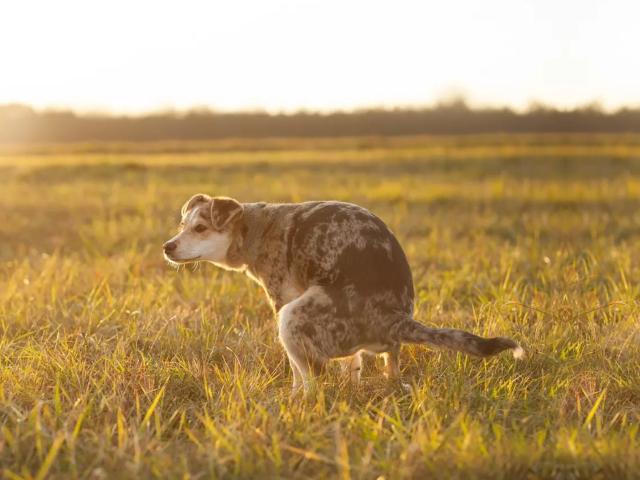Dogs, just like humans, can be anxious. Whether the cause is fear of loud or unfamiliar noises, separation, an unfamiliar experience, a new environment, your dog being afraid of going to the vet's, or other triggers, it's upsetting to see your dog anxious. The good news is that there are ways to help them feel calmer!
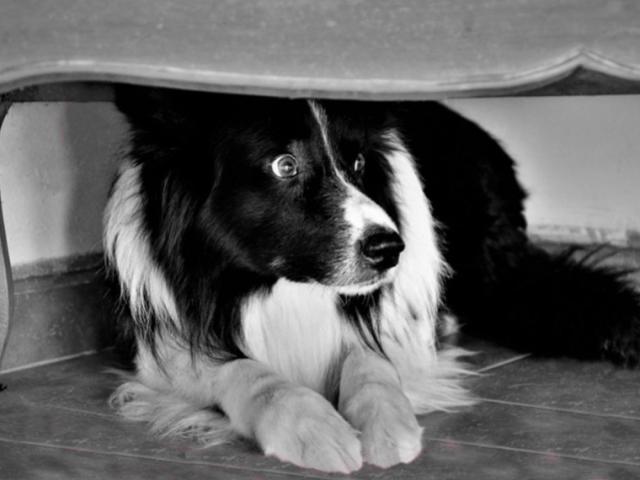
Prevention
The best thing, of course, is to do everything possible to prevent anxiety from an early age. We recommend thoroughly socialising your dog or puppy as soon as they're fully vaccinated. Socialisation classes are ideal because they'll expose your puppy to other dogs and humans, and will expose them to different experiences, and sudden noises of all kinds. If you can't take your dog to classes, taking them to meet other dogs and expose them to experiences and noises from a young age will also help. It's said that a puppy well socialised before the age of 7 months will be well socialised for life.
If you've adopted an adult dog, these methods will also be beneficial, but if the dog's past makes them anxious, for example adopting a dog that was previously abandoned, you'll also need to adapt other methods to help them.
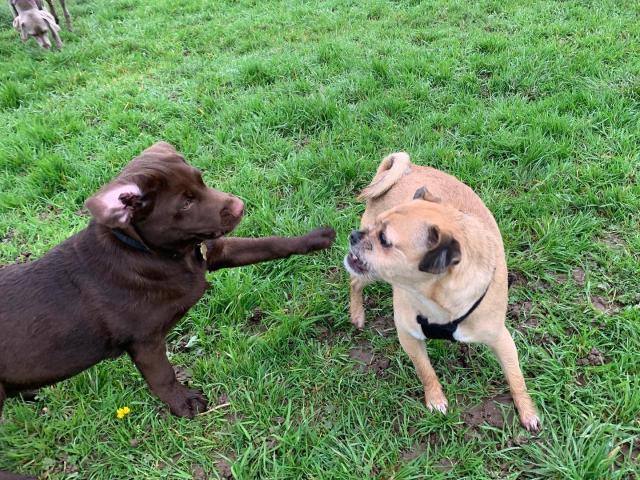
Methods to Calm Your Dog
Mental Stimulation & Regular Exercise
If your dog is tired, he is often calmer. Make sure he gets enough physical exercise by walking, playing, and running with him daily. Physical activity helps him release pent-up energy and reduce anxiety (just like it does for humans). Here are some ideas of activities to do with your dog. Mental stimulation is just as important and essential to your dog's well-being. A game of hide-and-seek, interactive toys, and training sessions not only stimulates his mind but also promote relaxation by redirecting his attention.
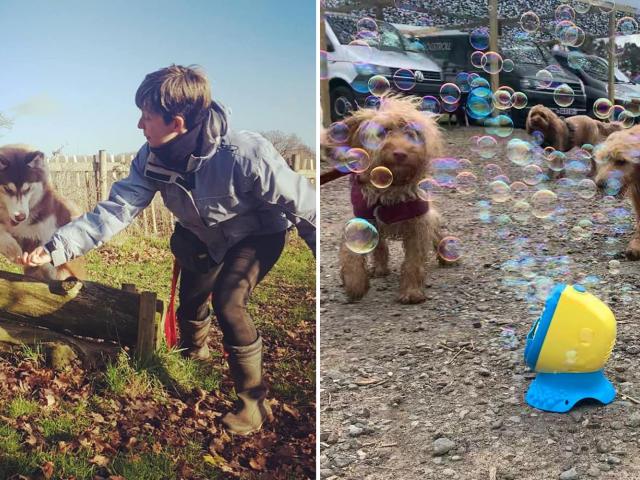
A Comfort Space
Just as humans have their own safe spaces, dogs also need their own space where they feel calm and secure. This could be their basket with favourite toys, the couch, a specific room, snuggling up to you, or even an open crate. The idea is to create a comforting environment where your dog can retreat when feeling anxious. Make sure this space is free from noise and disturbances, creating a den-like atmosphere.
Cuddles & Massaging
If you are near your dog when he feels anxious, your very presence will appease him if he sees you are calm and comforting. Sitting by his side and giving him cuddles will always help. Brushing him (if he enjoys being brushed) will also help, as will massaging him gently and slowly in the areas he most enjoys being massaged, for example around the ears.
Calming Aids
There are various products available to calm your dog's anxiety. Popular ones are the Calming Duck and the Snuggle Puppy, a cuddly toy with a heart and heating pad in the centre. Designed to comfort and soothe your dog or puppy in anxiety-provoking situations such as fireworks, thunderstorms, a visit to the vet, or other situations, and even if your dog or puppy suffers from separation anxiety.
There are also calming diffusers and sprays available, which have been shown to comfort some dogs and can therefore help. However they don't address the underlying causes of anxiety, and it is always best to prevent rather than cure.
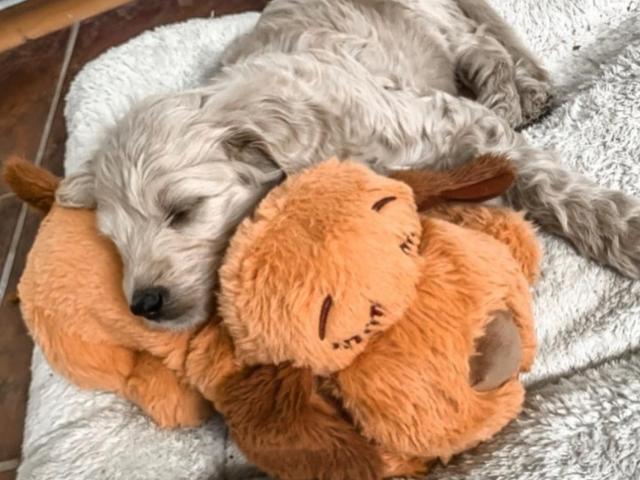
Stay calm
Dogs are incredibly sensitive to our emotions. When they sense that their owner is anxious or stressed, it can exacerbate their own anxiety. Therefore, it's essential to remain calm and relaxed when your dog feels uncomfortable. Speak in a soothing tone, avoid sudden movements, and project an air of calm. Your reassuring presence can do wonders to help your four-legged friend feel more secure.
Desensitisation
If your dog has specific anxiety triggers, such as loud noises or car rides, gradual desensitisation training is the key to treating the issue on the long term.
This involves exposing the dog to the triggers in a controlled and positive manner. For example, if your dog is afraid of car rides, start by sitting him in the parked car, with strokes, treats and praise. Gradually progress to short car rides, rewarding each calm behaviour.
Or expose him to a low noise to start with, standing by him and reassuring him with a stroke or cuddle. Gradually making the noise a little louder, and rewarding for courage with treats, gentle words and cuddles.
Over time, your dog will learn that these triggers aren't so scary after all and will associate them with positivity.
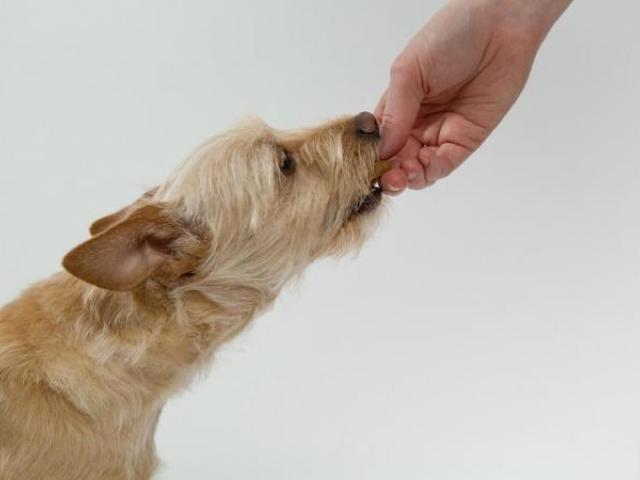
Day Care Center
Bringing your dog to a centre such as Dog Stroll's Dog Day Care center will ensure help your dog greatly with socialising, meeting other dogs and humans, getting lots of play time, being exercised through walks, play and agility, and mentally stimulated through play and in our sensory garden. Your dog will be tired from all the fun and activity when returning home, and will be calmer at home with you too.
